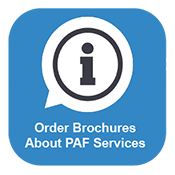Know Your Plan and How It Affects Your Wallet
Most of us know the basics of our health insurance plans but few of us take time to get into the nitty-gritty details.
If you are in the market for a new plan, it is important to prioritize your needs so that you select the best plan for you. For example, if your child has allergies, you’ll want to include a plan that allows for specialist doctor visits that won’t break the bank. After outlining your needs, you’ll want to research plans that accommodate them at the most reasonable cost to you. Some things you’ll want to consider when choosing a new plan include whether your primary care physician is in-network, your co-pay amount, your specific needs and affordability. You’ll also want to determine whether you need to choose a new physician. If so, be sure to seek out physicians who communicate well and ask about topics that are important to you like financial issues or concerns about your care. Assess the satisfaction (or dissatisfaction) you currently have with your plan to determine whether you should stay in it.
A key item to remember when selecting your plan and protecting your wallet is the cost vs. benefits ratio. The two primary costs incurred are the premium (your regular payment) and your out-of-pocket expenses (additional payments you make like co-pays, deductibles or coinsurance). When considering a new plan, ask your provider what other out-of-pocket expenses can occur including the cost of non-formulary drugs and the cost of using an out-of-network provider. If you are having trouble affording your drugs, be sure to visit http://www.copays.org/ to see what co-pay help might be available to you.
Be sure to scope out the “Your Share of Expenses” outline in your plan. Determine whether the co-pays are affordable for the services you use most often. Also, be sure to research your prescription drug benefits. In an effort for your provider to help manage costs, many plans offer a tiered prescription drug plan. Pay attention to the tier your prescriptions might be under to help evaluate your options when choosing your plan.
Here are a few specific definitions you should know about the sometimes complicated language in your plan and how to understand how it applies to your budget.
Benefit Limits (Capped Limits) – States how much of the health plan will pay for a specific product or service a consumer may receive. For example, you might experience a limit on the amount of specialty physician visits you may see. Once you’ve reached your cap, you are responsible for the services or products you receive.
Benefit Exclusions – Anything listed under a benefit exclusion list will not be covered by your healthcare provider.
Co-Insurance – Under this plan, the employer and the insured share the covered charges in a specified ratio. For example, the insurer might cover up to 80% of the costs while the insured (you) would cover the remaining 20%. This price varies based on a percentage of the treatment charge.
Co-Payment – The insured will pay a flat rate for a specific service or drug. Specialty doctors typically run more and if the drug you are prescribed is a non-formulary drug, you’ll typically see a little variation because you will be paying a percentage of the total cost of the drug.
Deductible – The amounts required to be paid by the insured under a health insurance contract before benefits become payable.
Discounted Fee-For-Service – A previously agreed-upon rate for services provided between the payer and the provider. This amount is usually less than the provider’s regular fee. Ask your provider about what kind of discounted fee-for-service plan is offered.
Out-of-Network – Out-of-Network costs occur when a patient receives treatment for using a hospital, physician, or other provider that does not have a contract with your health insurance plan. It is up to the provider to determine what billing you would receive. The difference between what your insurance pays and what the provider charges for the cost of care is the patient’s responsibility. Out-of-Network costs are a huge reason for large medical bills. Each time you are referred to a new doctor or experience a new treatment, be sure to communicate with your provider to ensure the service or treatment is within your network. For example, your surgeon might be in your network but the cardiologist he refers you to may not be.
Out-of-Pocket Costs – These costs refer to the amount of healthcare products or services in which the members are responsible for payment. This can include co-payments, co-insurance, deductibles, and premiums.
Premiums – This refers to the amount paid to an insurer for providing health insurance coverage. Premium amounts are typically paid monthly or bi-weekly.
Prevailing Charge – This is a fee based on customary charges for covered medical insurance services. This amount varies from locale to locale. As it relates to Medicare: it is the maximum amount approved or allowed for services rendered.
Reasonable Charge – As it related to Medicare: this determines reimbursement for items or services not yet covered under any fee schedule. Reasonable charges are usually determined by the lowest actual charge, the prevailing charge in the locality, the physicians’ customary charge or the carriers’ usual payment for comparable services.
Reimbursement – This refers to the actual payments received by the providers or patients or items for benefits covered under an insurance plan.
Usual, Customary, and Reasonable Charges (UCR) – These charges are a calculation by a managed care plan of what it believes to be reasonable, the appropriate fee for a particular service or treatment. The “usual” refers to the individual’s fee profile. The “customary” refers to the percentile of the pattern of charges made by physicians in a given locality. Finally, the “reasonable” portion refers to the lesser of the usual or customary screens.
All coverage terms and payment responsibilities vary depending on your out-of-pocket costs, which is why it’s really important to know your plan and the financially critical language within it. There are several ways plans can differ including annual deductible amounts, co-pays, and prescription amounts. Knowing your plan and the financial responsibilities within it will help you choose the right plan and help protect your wallet in the long run.










